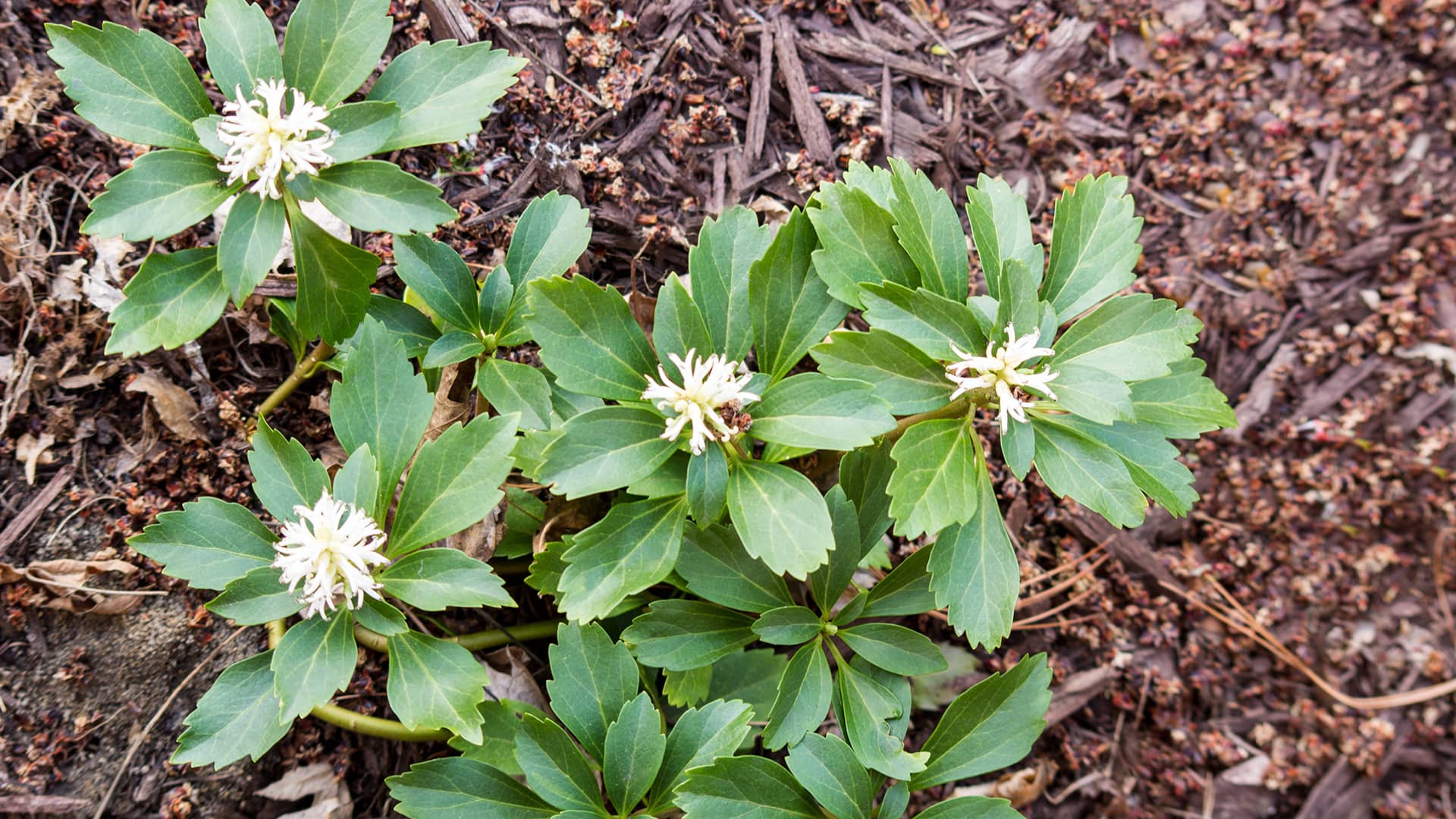Pachysandra Terminalis: A Versatile and Low-Maintenance Ground Cover Plant
Pachysandra terminalis, commonly known as Japanese spurge, is a species of evergreen perennial plant that is widely used as a ground cover in gardens and landscapes. Native to Japan and China, this plant has become popular in many parts of the world due to its attractive foliage, low maintenance requirements, and ability to thrive in a variety of growing conditions.
Appearance and Growth Habits
Pachysandra terminalis is a low-growing plant that typically reaches a height of 6 to 12 inches and spreads by underground rhizomes to form dense mats of foliage. The leaves are glossy and dark green, with a leathery texture and serrated edges. In the spring, this plant produces small white flowers on spikes that rise above the foliage, adding a touch of beauty to the landscape.
Planting and Care
Light and Soil Requirements
Pachysandra terminalis prefers partial to full shade and well-drained soil that is rich in organic matter. It can tolerate a wide range of soil pH levels, making it adaptable to many different garden conditions. When planting, space the plants about 6 to 12 inches apart to allow for proper spreading.
Watering and Fertilizing
Water the plants regularly, especially during dry periods, to keep the soil consistently moist but not waterlogged. Avoid overwatering, as this can lead to root rot. Fertilize the plants in the spring with a balanced slow-release fertilizer to promote healthy growth and vibrant foliage.
Pruning and Maintenance

Pachysandra terminalis is a low-maintenance plant that requires minimal pruning. Remove any dead or damaged foliage in the spring to encourage new growth and maintain the plant’s appearance. Overgrown patches can be trimmed back to promote denser growth and prevent the plants from becoming leggy.
Uses in Landscaping
Pachysandra terminalis is a versatile plant that can be used in a variety of landscaping applications. It is commonly used as a ground cover under trees and shrubs where other plants struggle to grow due to shade and competition for resources. Its dense foliage helps to suppress weeds and create a uniform, lush appearance in the garden.
Erosion Control
Due to its spreading growth habit and dense root system, Pachysandra terminalis is also effective for erosion control on slopes and banks. The plants form a thick carpet of foliage that helps to stabilize the soil and prevent erosion caused by water runoff.
Border Plantings
In addition to ground cover, Pachysandra terminalis can be used as a border plant along walkways, driveways, and garden beds. Its low profile and attractive foliage provide a neat and tidy appearance while adding a touch of greenery to the landscape.
Propagation
Pachysandra terminalis can be easily propagated by dividing established clumps in the spring or fall. Simply dig up a section of the plant with a sharp shovel and replant it in a new location. This method of propagation is quick and effective, allowing you to expand your Pachysandra collection without having to purchase additional plants.
Common Pests and Diseases
Pachysandra terminalis is generally resistant to pests and diseases, making it a low-maintenance plant for the garden. However, it may occasionally be affected by leaf spot, powdery mildew, or root rot in poorly draining soil. To prevent these issues, avoid overhead watering and provide adequate air circulation around the plants.
Conclusion
Pachysandra terminalis is a versatile and attractive plant that is well-suited for use as a ground cover in gardens and landscapes. With its glossy foliage, low maintenance requirements, and ability to thrive in shade, this plant is a popular choice for gardeners looking to add greenery and texture to their outdoor spaces. Whether used for erosion control, border plantings, or underplanting trees and shrubs, Pachysandra terminalis is sure to enhance the beauty and functionality of any garden.